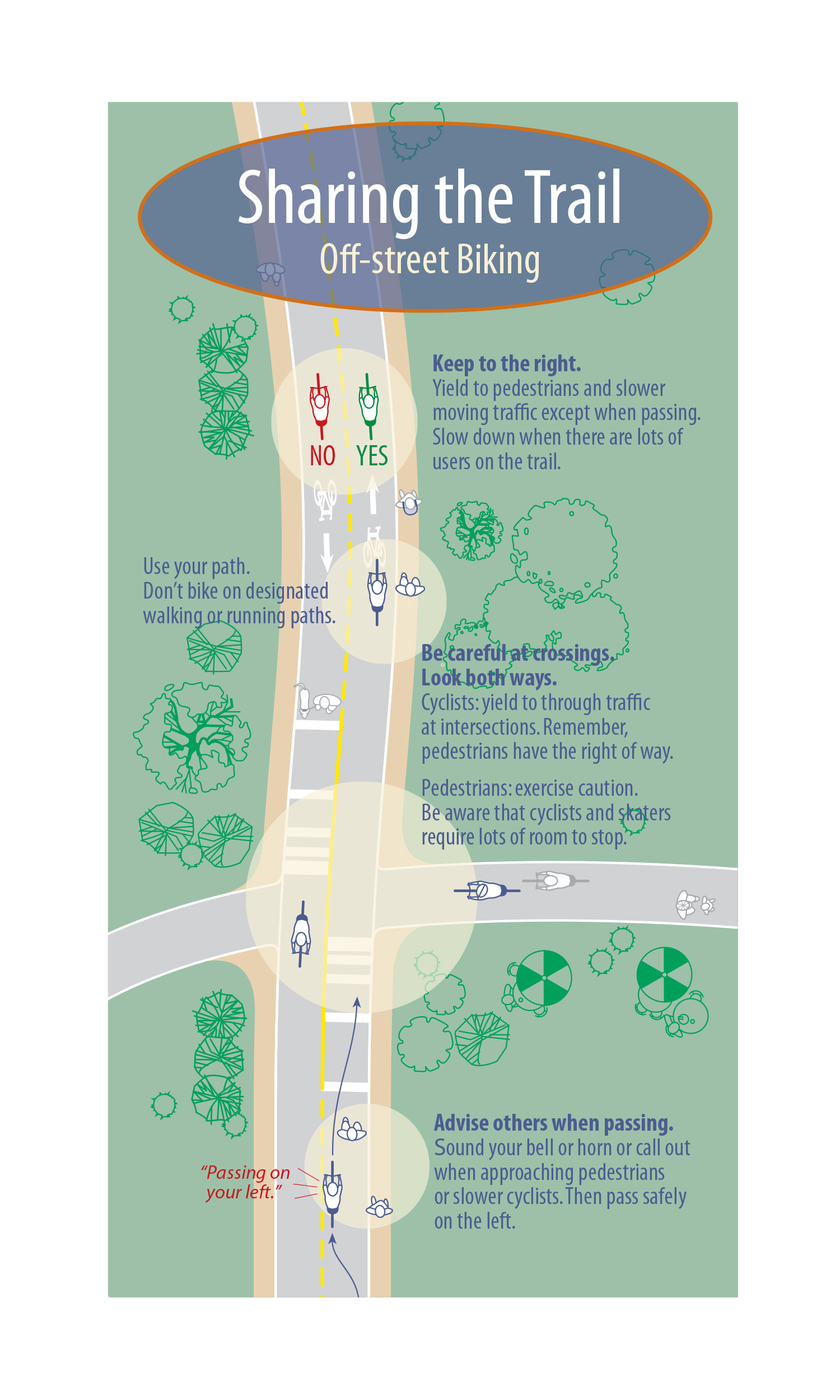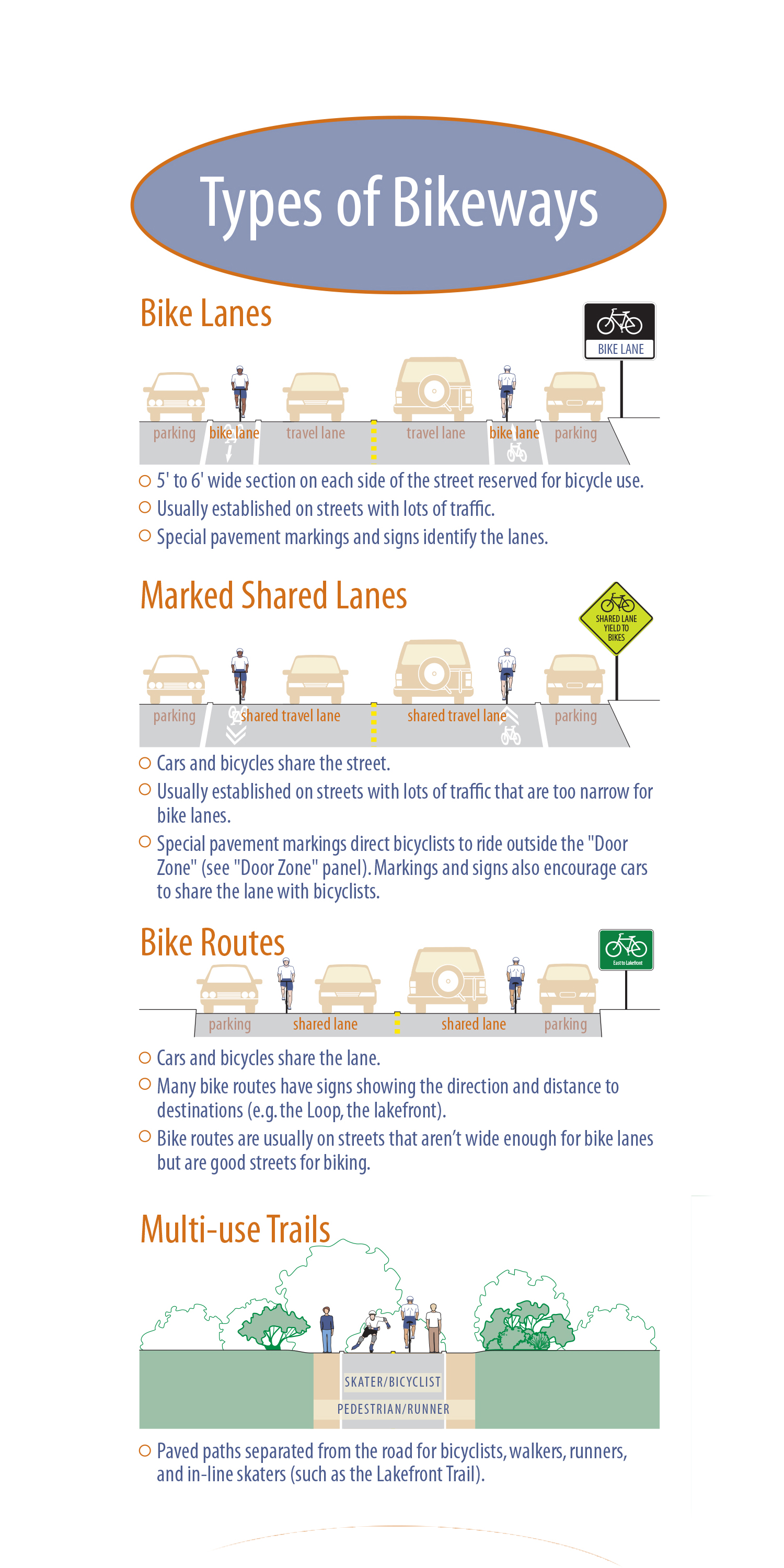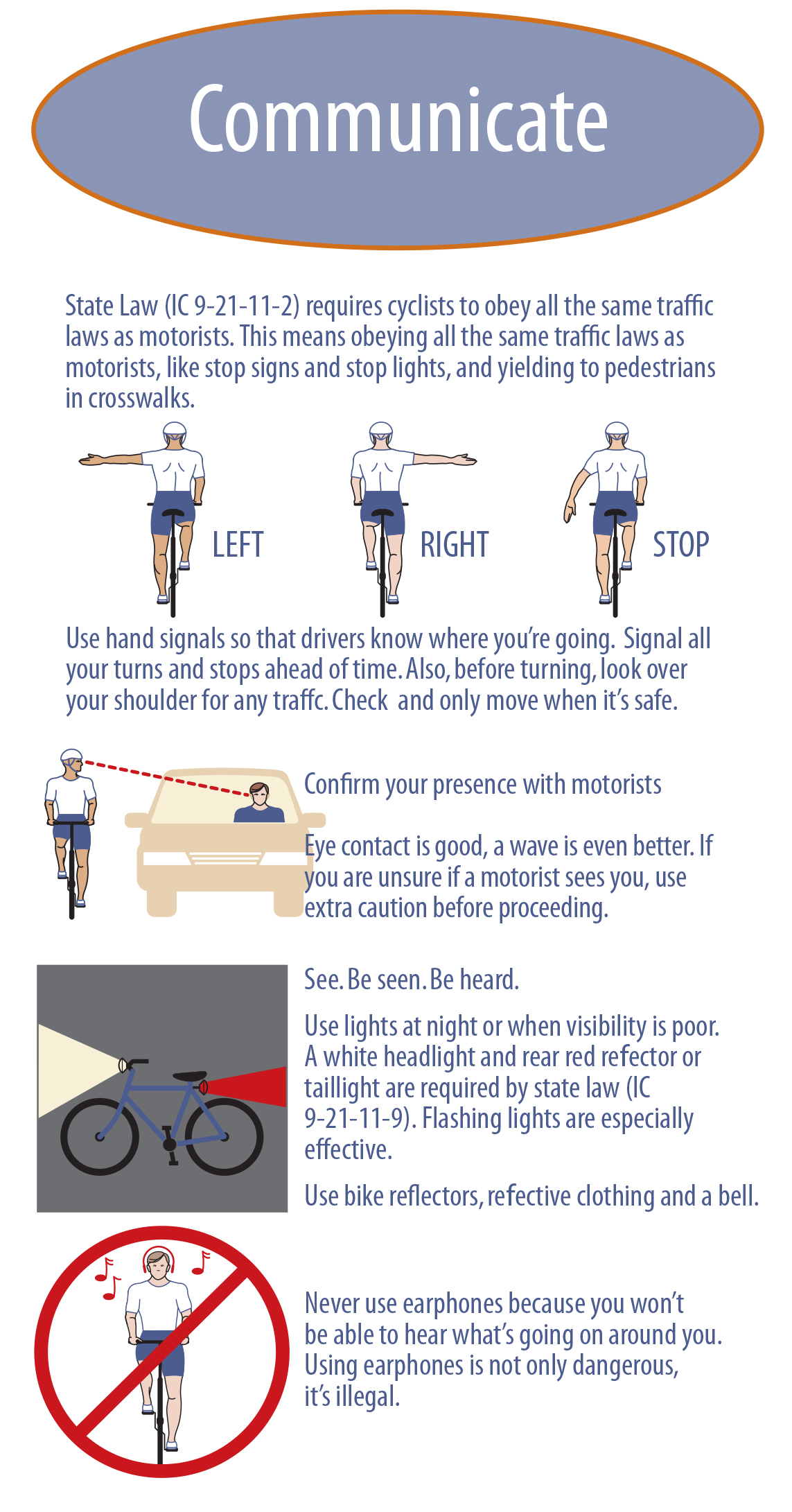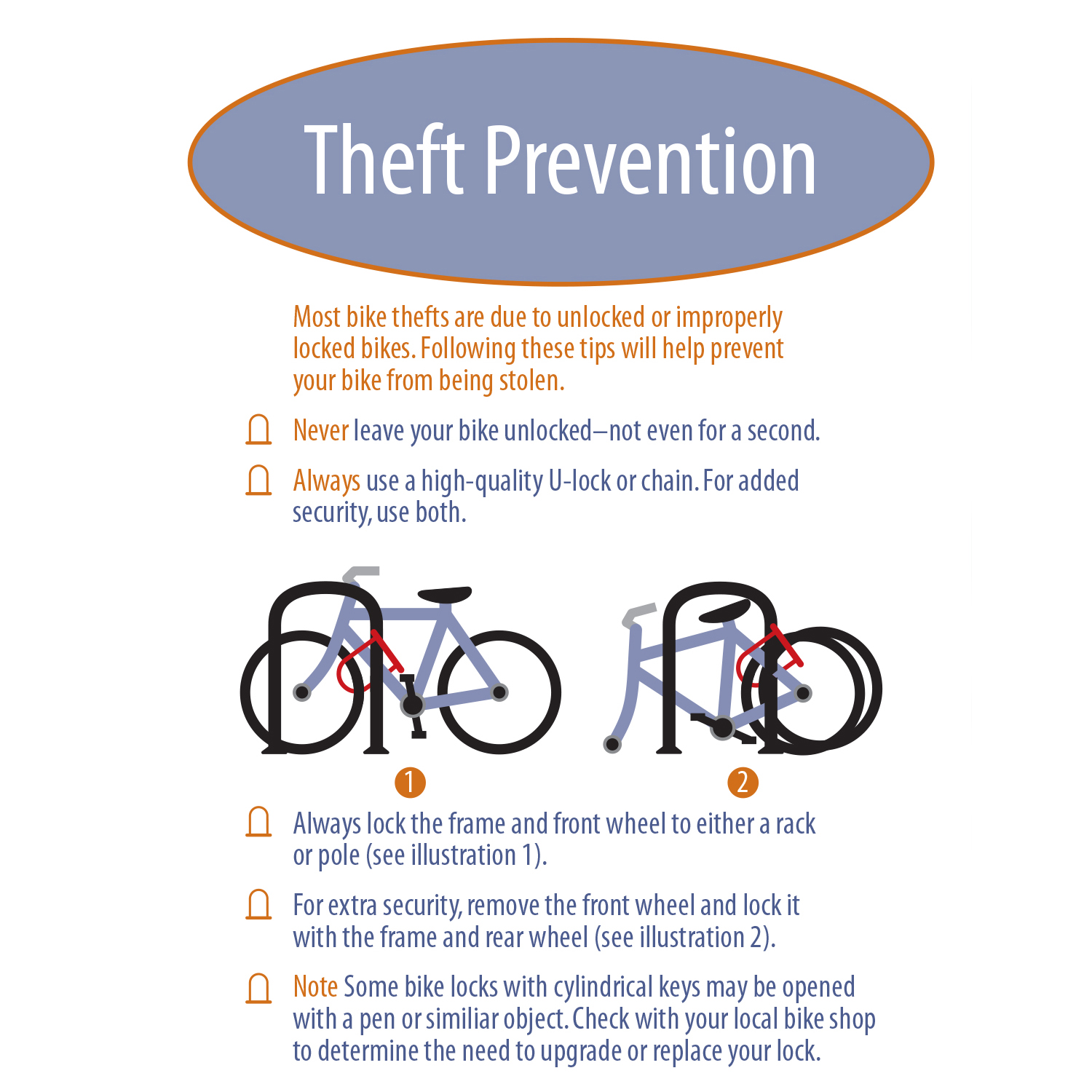Safety
One of the most important aspects of biking in the city is making sure you feel safe when you ride. Here are some tips to keep you safe from the Active Transportation Alliance:
By operating your bike according to the basic principles of traffic, motorists can see you more easily.
- Always ride with traffic, not against it.
- Obey all traffic laws, signs and signals.
- Don’t ride on the sidewalk (its illegal for anyone over 12 years of age).
- Wear bright / reflective clothing, especially when biking at night.
- Always use appropriate lighting and reflectors when biking at night (it’s the law).
- Never wear headphones when you bike.
- Be aware of your surroundings!
Think of a helmet the same way you think of a seat belt. It won’t prevent a crash but it might save your life if you ever have one. Some things to consider:
- Size – If the helmet doesn’t cover your head down onto your forehead than it is too small. If there is a gap and it wobbles on your head, than it is too large.
Eyes, ears and mouth test –
- Eyes - Adjust the helmet so that it sits level and the rim is just in your field of vision when looking up. There should be one inch of space between your eyebrows and the rim of the helmet.
- Ears – Adjust the buckles on the side straps so they form a “Y” directly below your earlobes.
- Mouth- The straps should be buckled under your chin with enough tension that you can feel the helmet pull down when your mouth is opened wide.







